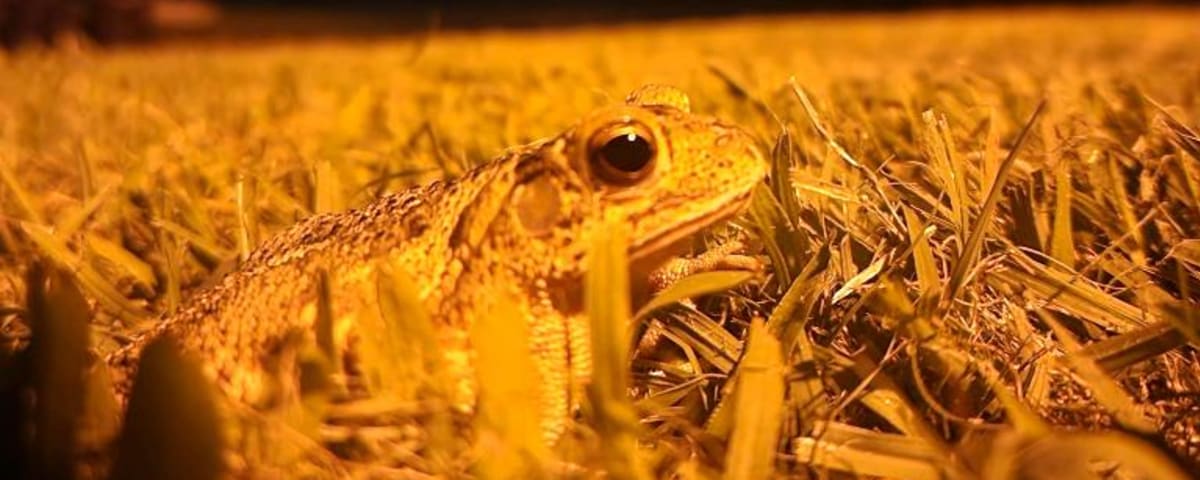Best grass for Central Texas: From Zero to Lawn Hero
Master the Art of Luxurious Lawn Care in Central Texas

Ever stared out your window, heart sinking, at the sad patch of straw you're supposed to call a lawn? You're not alone. There's a legion of Central Texas homeowners just like you, wincing every time they step outside, caught in the same sun-scorched battle. But we're not just dealing with any old sun here, we're grappling with the notorious Texas heat, a beast of its own kind. Seems like no matter how much you water, or plead, or curse, that stubborn dirt just laughs back at you, doesn't it?
You're thinking, "Shouldn't this be easier?" Yes, it should. And it can be. You've got the spirit; all you need now are the right tricks up your sleeve. Isn't it time you stopped being that 'poor sap with the sad lawn' and started being the Lawn Hero your yard's been crying out for?
So, how about it? Ready to turn that barren battlefield into a lush, green Eden that'll have the whole block green with envy? Ready to ditch the shame and strut out onto a lawn that turns heads? Let's transform you from zero to Lawn Hero. This is your moment. Buckle up, friend. It's time to grow not just the grass, but your pride. Let's begin.

Diving Deep into Your Lawn’s Needs: It’s More Than a Watering Game
We're starting at the beginning. Let's talk about what your lawn really craves. It's not just about throwing some water at it. It's about understanding the type of soil under your feet, and what it means for your lawn.
In Central Texas, you're likely dealing with one of two main types of soil - sandy or clayey. Sandy soils drain fast and don't hold onto nutrients very well, while clay soils hold water like a sponge and can choke your grass's roots. Know your soil type, and you're one step closer to that lush lawn you're dreaming of.
But here's the kicker - you can improve your soil, no matter its type. Adding organic matter, like compost or manure, can help sandy soil retain water and nutrients. For clay soil, it can break up the compacted clay and make it easier for water to drain and for roots to spread.
Now, about that water. Overwatering is just as bad, if not worse, than underwatering. You know the saying, "Too much of a good thing..."? Well, it applies to water, too. You want to give your lawn a deep drink, but not so much that it starts to get soggy. Think of it this way - you wouldn't try to sprint a marathon while chugging water from a firehose, would you?
Then there's the sun to think about. A grassy lawn under the blazing Texas sun is like a marathon runner on race day. It needs hydration to perform its best, but the timing and the amount are critical. And, just like some folks can't handle full sun, neither can some types of grass. They need some shade to protect them from the midday heat. But don't worry, we're getting to that.
Meet Your New Green Allies: Choosing the Right Grass
Here's where things start to get interesting. Picking the right type of grass. Bermuda, St. Augustine, Zoysia, Buffalo – they're not just fancy names; they're your potential partners in this journey.
- Bermuda grass: Loves soaking up the sun. A big drinker, though, so your water bills might tick up. It's a tough little number that can handle foot traffic like a champ. Best for sandy soils where it can spread its roots easily.
- St. Augustine: Shade-lover, always looking for a cool spot. It can handle a little salt, making it great for coastal areas. Be careful, it's like candy to chinch bugs. Its love for moisture makes it suitable for clayey soils.
- Zoysia: The royalty of grasses, fine-textured and plush. But oh boy, it grows slower than a tortoise in tar. It doesn't mind a bit of shade, either. Tolerates a variety of soils but prefers a well-drained one.
- Buffalo grass: The native Texan. Tough, eco-friendly, but gives you a straw-colored lawn in winter. It's adaptable and can handle the sandy to loamy soils typical of Central Texas.
And then there's the care. Each of these grass types has its own specific needs. Bermuda grass, for instance, needs regular feedings with a nitrogen-rich fertilizer and likes to be mowed short. St. Augustine, on the other hand, likes a little more height on its blades and prefers a balanced fertilizer. Getting to know your grass type and how to care for it is like setting up a successful blind date. They just need to get along for the magic to happen.
Feeding Your Lawn: The Power of Proper Fertilization
Ever heard about "feeding your lawn?" Yep, fertilization is like a protein shake for your grass. But it's not just about throwing down some granular fertilizer and calling it a day. You've got to know what kind of food your lawn likes.
Most grass types love nitrogen. It helps them grow and gives them their green color. But too much nitrogen can burn your grass and promote too much leaf growth at the expense of root growth. That's why you need to balance it with other nutrients, like phosphorus and potassium.
Now, here's where things get interesting. Did you know organic compost could sometimes be the knight in shining armor your lawn needs? And it's not just about feeding your lawn. Compost improves the structure of your soil, making it easier for water and nutrients to reach your grass's roots.
But compost is not one-size-fits-all. Different composts provide different nutrients. For example, compost made from kitchen scraps is generally high in nitrogen, while compost made from leaves is usually low in nitrogen but high in other nutrients.
And the best part? You can make your compost at home from kitchen waste and yard trimmings. It's like cooking a gourmet meal for your lawn!
Sculpt Like a Pro: Mow Like You Mean It
Think mowing's all about trimming grass? Ah, my friend, think again. You're not just cutting grass; you're crafting a masterpiece. And like any good artist, you need to know your medium.
For starters, different grasses like different haircuts. For example, Bermuda grass likes a close cut, while St. Augustine grass prefers a bit more length. Keeping your grass at the right height helps it stay healthy and ward off pests.
But that's not all. You also need to consider the direction of your mowing. Mowing in the same direction every time can compact the soil and create ruts. Instead, mix it up. Mow north to south one week, then east to west the next.
And what about timing? It's best to mow in the early morning or late evening when it's cooler. This reduces the stress on your grass and helps it recover faster.
Oh, and one more thing—sharp blades are crucial. Dull blades tear the grass, leaving it open to disease. Keep your mower blades sharp for a clean, healthy cut.
The Weed War: Uninvited Guests or Hidden Allies?
Weeds. The party crashers of your lawn shindig. But hang on, before you go nuclear with weed killers, some "weeds" could be helping you out.
Take clover, for example. It's often considered a weed, but it has a secret superpower. It can pull nitrogen from the air and convert it into a form that plants can use. In other words, it can fertilize your lawn for you.
Dandelions, too, are more than just pesky weeds. Their deep roots break up compacted soil and bring up nutrients from the depths, helping to improve your soil.
But that doesn't mean you should let your lawn become a weed jungle. Many weeds are just pests that compete with your grass for resources. For these unwanted guests, a combination of good lawn care practices and targeted weed control can help you maintain the balance between friend and foe.
In the Cool Shade: Make it Work for You
Let's chat about shade. The kind under trees or next to buildings, not the kind you throw at your neighbor's over-the-top garden gnome.
Grass and shade can be friends. Some grass types are just made for shady areas. They're the introverts of the grass world, loving those quiet, cool corners of your yard. St. Augustine grass and Zoysia grass, for instance, can tolerate some shade. So, if your lawn has some shady spots, don't despair - there's a grass for that.
But even shade-loving grasses need some sunlight, so if you've got a heavily shaded lawn, you might need to consider other options, like shade-tolerant ground covers or creating a shade garden with shade-loving shrubs and flowers.
Hydrate Your Lawn: It’s All About Timing
And finally, watering. Seems simple, right? Think again. Watering is a science and an art, all rolled into one.
First, let's talk timing. Watering in the early morning is best. It's cooler, so less water evaporates before it can reach your grass's roots. And your grass gets to soak up all that water before the sun hits its peak.
The amount of water is important too. As a rule of thumb, most lawns need about 1 to 1.5 inches of water per week, either from rain or watering. But remember, deep, infrequent watering is better than frequent, shallow watering. It encourages your grass to grow deep roots, making it more drought-tolerant.
And don't forget about rain. Nature's own irrigation system can do a lot of the watering for you, so check your local weather forecast and plan your watering accordingly. Got a rain gauge? Even better. It can help you keep track of how much water your lawn is getting from rain so you can adjust your watering as needed.
Claiming Your Title: From Zero to Lawn Hero
Look at how far you've come, my friend.
You may have started with a lawn that seemed like a green mission impossible, but look at you now. You're ready to take control and transform your patch of earth into a lush, green spectacle.
You know about soil types and how to improve them. You've met your new green allies and learned how to care for them. You're ready to feed your lawn with the right nutrients and sculpt it like a pro. You've even made peace with your weeds and learned to use shade to your advantage.
But most importantly, you've discovered the power of timing, and how it can make or break your lawn care efforts. From the timing of your watering to the timing of your mowing, you've learned that sometimes, it's not just about what you do, but when you do it.
You, my friend, are ready. Ready to put these tips into practice, ready to put your heart and soul into your lawn. And I have no doubt that when you do, you'll transform from zero to Lawn Hero.
So go on, step out onto your lawn, and let your journey begin.


